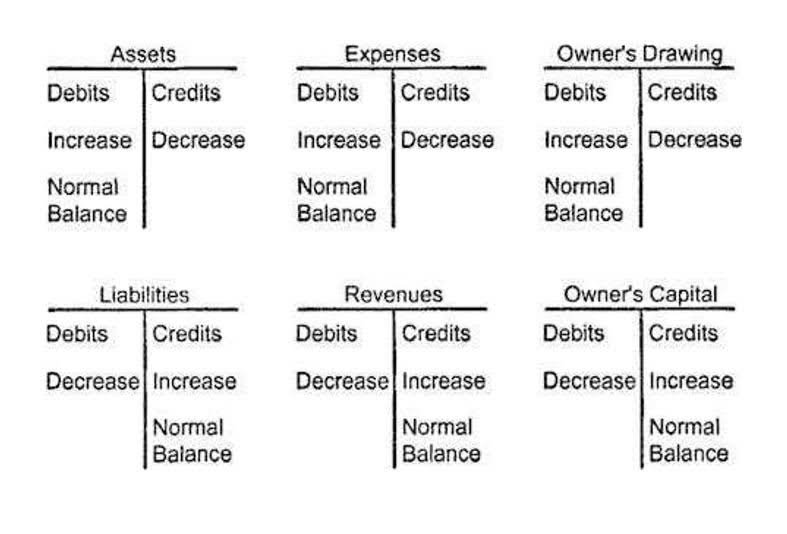The owner of this website may be compensated in exchange for featured placement of certain sponsored products and services, or your clicking on links posted on this website. This compensation may impact how and where products appear on this site (including, for example, the order in which they appear), with exception for mortgage and home lending related products. SuperMoney strives to provide a wide array of offers for our users, but our offers do not represent all financial services companies or products. Get instant access to lessons taught by experienced private equity pros and bulge bracket investment bankers including financial statement modeling, DCF, M&A, LBO, Comps and Excel Modeling. High-interest rates can lead to a rise in debt financing costs, which leads to higher liabilities. In addition, changes in the management hierarchy can influence the BVPS if they impact the company’s direction or efficiency.
The Wharton Online & Wall Street Prep Buy-Side Investing Certificate Program
In reality, during the liquidation of a company, the actual amount received per share may be more or less than this figure due to various factors such as market conditions or legal issues. An asset’s book value is calculated by subtracting depreciation from the purchase value of an asset. Depreciation is generally an estimate, and there are various methods for calculating depreciation.
No Consideration for Future Growth Potential
If a company pays dividends from its profits or retained earnings, it will decrease the retained earnings in the shareholder’s equity part of the balance sheet, resulting in a lower book value. A P/B ratio of 1.0 indicates that the market price of a company’s shares is exactly equal to its book value. For value investors, this may signal a good buy since the market price of a company generally carries some premium over book value. The price-to-book ratio is simple to calculate—you divide the market price per share by the book value per share.
Informing Fair Price in M&A Deals
In this case, the stock seems to trade at a multiple that is roughly in line with its peers. Hence, its market capitalisation is Rs.6.2 lakh (62 x 10000) and its shareholder’s equity or net value of assets is Rs.6 lakh (1500,000 – 900,000). Therefore, the book value of Company Arbitrary would be the difference between its total assets and total liabilities. When a company has a high book value per share, it may signify its strategic emphasis on sustainability. Book value per share holds a significant relationship to a company’s commitment to Corporate Social Responsibility (CSR) and sustainability. It can serve as a key metric to assess a company’s reliable performance in these areas.
How Does BVPS Differ from Market Value Per Share?
These elements can far exceed the value of tangible assets, particularly in tech or creative industries. In such cases, other valuation techniques such as discounted cash flow or multiples of earnings may serve as a better indicator of value. However, in combination with these other methods, the book value per share is still a powerful tool, playing a vital role in the evaluation of potential M&A deals. For example, consider a company with a $100 million book value, mostly in stable real-estate, trading at a P/B of 0.95. Value investors see a $5 million undervaluation relative to book value that they believe will be corrected for over time. The book value per share is calculated by subtracting the preferred stock from the stockholders’ total equity (book value) and dividing that by the average number of outstanding shares.
When the price that you pay for a share is close to or below its book value, it limits the potential downside of an investment, although it doesn’t exclude it. When the market value per share is lower than the book value per share, the company can be construed as undervalued and may become an attractive option for value investors. Conversely, when the market value per share is significantly higher than the book value per share, the company may be seen as overvalued, suggesting that its stock might be trading at a premium. Before discussing different factors, it’s important to remember that book value per share is essentially an indication of a company’s intrinsic worth, determined from its balance sheet data.
If a company has a book value per share that’s higher than its market value per share, it’s an undervalued stock. Undervalued stock that is trading well below its book value can be an attractive option for some investors. One limitation of book value per share is that, in and of itself, it doesn’t tell you much as an investor. Investors must compare the BVPS to the market price of the stock to begin to analyze how it impacts them. It’s important to use the average number of outstanding shares in this calculation. A short-term event, such as a stock buy-back, can skew period-ending values, and this would influence results and diminish their reliability.
We endeavor to ensure that the information on this site is current and accurate but you should confirm any information with the product or service provider and read the information they can provide. Any opinions, analyses, reviews or recommendations expressed here are those of the author’s alone, and have not been reviewed, approved or otherwise endorsed by any financial institution. Clear differences between the book value and market value of equity can occur, which happens more often than not for the vast majority of companies. To estimate the intrinsic value of the company, you’ve built a DCF model in which the implied market value came out to be $20 billion.
The book value per share (BVPS) metric can be used by investors to gauge whether a stock price is undervalued by comparing it to the firm’s market value per share. If a company’s BVPS is higher than its market value per share—its current stock price—then the stock is considered undervalued. If the firm’s BVPS increases, the stock should be perceived as more valuable, and the stock price should increase.
The market value depends on the current market price and how many outstanding shares exist. So, it reflects current prices and changes often as it considers sentiment around future growth in the market. If XYZ uses $300,000 of its earnings to reduce liabilities, common equity also increases. Specifically, it doesn’t factor in intangible assets such as a company’s brand value or intellectual property.
Investors tend to assign value to companies’ growth and earnings potential, not just their balance sheet assets. As a result, most companies included in indices such as the S&P 500, the Dow Jones Industrial Average, and the Nasdaq Composite, possess market values that exceed their book values. The price-to-book (P/B) metric allows investors to compare a company’s market capitalization to its book value, in the form of a ratio.
In simplified terms, it’s also the original value of the common stock issued plus retained earnings, minus dividends and stock buybacks. BVPS is the book value of the company divided by the corporation’s issued and outstanding common shares. Moreover, book value per share or BVPS at any point of time elucidates the shareholders concerning the book value of share they are holding regardless of its market price. Based on that, they can gauge whether stock prices will go down or up in the future. Why this is so important to investors is because it provides a concrete knowledge of a company’s value if all its assets were to be liquidated and all liabilities settled. Common shareholders are at the bottom rung when it comes to payout in the event of liquidation of an organisation.
MVPS is forward-looking with the investment community’s perception of the value of the claims, while BVPS is more on the accounting side. In other words, the BVPS is essentially how much would remain if the shareholders sold the company’s assets and paid its debts. By multiplying the diluted share count of 1.4bn by the corresponding share price for the year, we can calculate the market capitalization for each year. The formula for BVPS involves taking the book value of equity and dividing that figure by the weighted average of shares outstanding. The book value of equity (BVE) is the value of a company’s assets, as if all its assets were hypothetically liquidated to pay off its liabilities. In theory, a low price-to-book-value ratio means you have a cushion against poor performance.
The value of a common stock, therefore, is related to the monetary value of the common shareholders’ residual claim on the corporation – the net asset value or common equity of the corporation. The stock’s current market price reflects its growth potential in contrast to its Book Value. One can look at their book value per share to compare the value of different companies.
- Book value per share is one alternative to assess whether the market price for a stock is overvalued or undervalued.
- Understanding a financial metric known as Book Value Per Share (BVPS) can give you valuable insights into a company’s financial health.
- Investors tend to assign value to companies’ growth and earnings potential, not just their balance sheet assets.
- A company’s accounting practices, especially regarding depreciation and amortization, can also significantly affect its book value.
Making Calculations Practical Now it’s time to use the calculation for something. The first thing one might do is compare the price/BVPS number to the historic trend. In this case, the company’s price/BVPS multiple seems to have been sliding for several years.
Breaking down the book value on a per-share may help investors decide whether they think the stock’s market value is overpriced or underpriced. Similarly, if the company uses $200,000 of the generated revenues to pay up debts and reduce liabilities, it will also increase the equity available to common stockholders. A company can also increase the book value per share by using the generated profits to buy more assets or reduce liabilities. For example, if ABC Limited generates $1 million in earnings during the year and uses $300,000 to purchase more assets for the company, it will increase the common equity, and hence, raise the BVPS.
Because book value per share only considers the book value, it fails to incorporate other intangible factors that may increase the market value of a company’s shares, even upon liquidation. For instance, banks or high-tech software companies often have very little tangible assets relative to their intellectual property and human capital (labor force). The difference between a company’s total assets and total liabilities is its net asset value, or the value remaining for equity shareholders.
Book value is the amount found by totaling a company’s tangible assets (such as stocks, bonds, inventory, manufacturing equipment, real estate, and so forth) and subtracting its liabilities. In theory, book value should include everything down to the pencils and staples used by employees, but for simplicity’s sake, companies generally only include large assets that are easily quantified. The market value, or “market capitalization”, is the fair value of a public company’s common equity, which can be expressed as a standalone metric or on a per-share basis.
An exception to this valuation is in bank stocks which tend to trade below their BVPS due to their increased risk from trading activities. Let’s assume Company Anand Pvt Ltd has $25,000,000 of stockholders’ equity, $5,000,000 incremental analysis preferred stock, and total outstanding shares of $10,000,000 shares outstanding. Perhaps one of the most significant limitations of BVPS is that it often fails to account for the true value of intangible assets.
The book value per share is significant for investors as it helps them determine the intrinsic value of a given company’s shares. The difference between book value per share and market share price is as follows. For example, if a company has a total asset balance of $40mm and liabilities of $25mm, then the book value of equity (BVE) is $15mm. Therefore, the amount of cash remaining once all outstanding liabilities are paid off is captured by the book value of equity. A company’s “Book Value”, also referred to as Shareholder’s Equity or Owner’s Equity, can be calculated by subtracting Total Liabilities from Total Assets. Understanding and using the book value per share in these ways can aid investors in forming a solid and effective investment strategy.
Book value is a snapshot of a company’s value at a specific moment in time, capturing the company’s current assets without any consideration of its ability to generate future profits. A high book value per share often indicates that a company has more tangible assets relative to its outstanding shares. This could suggest the company has robust financial health because it owns valuable assets such as property, equipment, or other resources. Understanding https://www.bookkeeping-reviews.com/ a financial metric known as Book Value Per Share (BVPS) can give you valuable insights into a company’s financial health. In this blog post, we will explore the meaning of BVPS, explain its formula, provide step-by-step instructions on how to calculate it, and offer a practical example to help illustrate its importance. For example, let’s say that ABC Corporation has total equity of $1,000,000 and 1,000,000 shares outstanding.
Like other multiple-based approaches, the trend in price/BVPS can be assessed over time or compared to multiples of similar companies to assess relative value. And, the final, the repurchase of common shares will also increase the book value per share. The price-to-book value ratio, also known as the price-equity ratio, is also derived from the book value of an organisation. P/B ratio shows the relationship between a company’s market capitalisation and its book value. The book value of an organisation is computed after netting the aggregate book value of all the assets against its intangible counterparts and liabilities.
It depends on a number of factors, such as the company’s financial statements, competitive landscape, and management team. Even if a company has a high book value per share, there’s no guarantee that it will be a successful investment. This is why it’s so important to do a lot of research before making any investment decisions. In closing, it’s easy to see why the book value per share is such an important metric.








